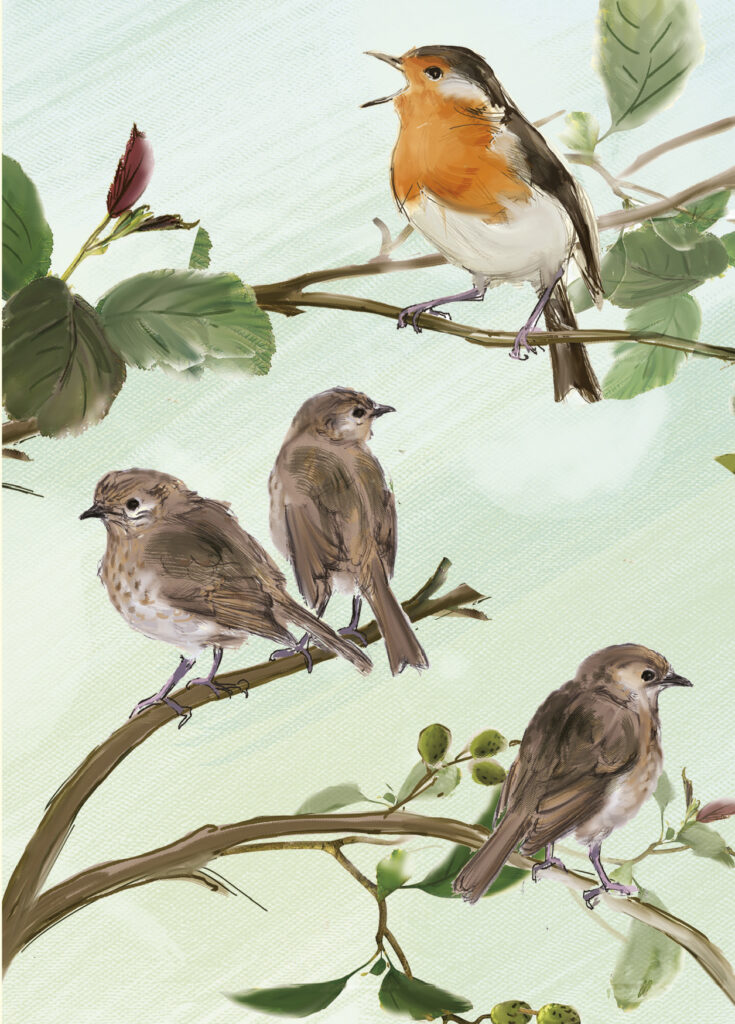
There
is nothing bashful about the Robin with their loud red breasts, loud
melodic singing voices and bold opportunistic habit of following us
around to cash
in on the insects
and worms we expose as we walk through patches of rotting leaves or dig our gardens with our spades, they can become extremely tame and
some will feed from the hand. In medieval times it was popular to give
birds human names as in Jack Daw and Jenny Wren. Robin
was originally a diminutive of Robert, but Chaucer called them “Tame
Rudducks” which is perhaps an older name. Other common names include
Bob Robin, Bobbies, Ploughman’s Bird, Robinet and Robin Ruck.
There are many stories about how the Robin got a red breast; one
is that it was scorched whilst fetching water for the souls of purgatory which is why the Welsh call Robins Brou-rhuddyn (Burnt Breast). Another legend has it that the Robin’s breast became
stained red with blood of Christ whilst it sang to ease his pain on the cross, but this is not
the reason why the bird occurs on our Christmas cards. The
birds traditional place on Christmas cards started in Victorian times when
there was a tradition that the postman would deliver your Christmas
cards on Christmas day. The postmen wore red jackets and were nicknamed
Robin Redbreasts.

The image above has been reproduced as a Two Bad Mice Greeting card as part of series on British birds. They make ideal gifts and cards for bird watchers
